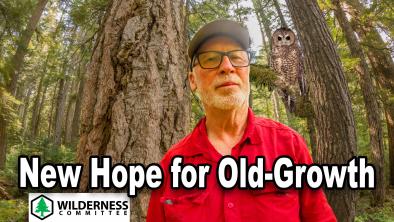North America’s first northern spotted owls hatched in captivity
Vancouver Sun

Photograph by: Handout, Mountain View Conservation and Breeding Centre
VANCOUVER — In a North American first, two pairs of endangered northern spotted owls have successfully hatched young in captivity by a wildlife breeding centre in British Columbia.
The latest hatching in May — at the non-profit Mountain View Conservation and Breeding Centre in Langley, B.C., a suburb east of Vancouver — followed the successful mating of a 14-year-old female and 11-year-old male, both captured from the wild in 2008.
“It’s pretty exciting,” said Mountain View founder Gordon Blankstein, who is working with the provincial environment ministry on a recovery program for the birds of prey. “It’s doing fine, a big ball of fluff. It’s fledged and can fly.”
The earlier hatching occurred in May 2008 to a pair that included a 14-year-old female raised in captivity after being struck by a vehicle shortly after birth, and a precocious one-year-old male plucked from the Stein Valley near Lillooet, in the B.C. Interior, in 2007.
That one surprised everyone at Mountain View, given the age difference and the fact the female had never seen another spotted owl. “Lo and behold, they both had a youngster,” Blankstein said.
Previously only one pair of spotted owls had given birth in North America, at the High Desert Museum in Bend, Ore.
A total of 10 spotted owls now live at Mountain View, including six obtained from the wild and two obtained last year from High Desert Museum in a friendly hands-across-the-border gesture. Future owlets born at High Desert Museum will go to Mountain View, as will any from a pair of owls at Woodland Park Zoo in Seattle.
Another wild owl died of head trauma in 2007 only two days after arriving at Mountain View.
It’s unknown whether it suffered the wound before arriving.
Only about half a dozen of the owls are still thought to exist in the wild in southwestern B.C., where they are the victims of old-growth logging.
Joe Foy of the Western Canada Wilderness Committee argued that the recovery program can work only if the province stops logging of old-growth habitat.
The owls’ habitat is so fragmented that wild individuals cannot find each other to mate.
Foy said he is encouraged that the province is considering declaring an area of 300,000 hectares of spotted owl habitat, which includes parks, off-limits to logging in southwestern B.C., but argues the measure remains inadequate to ensure the owls’ survival in the wild.
Sex of the two young owls born at Mountain View is unknown due to a policy of interfering with them as little as possible in captivity. However, there are cameras that record breeding success.
The owls are fed live mice and quail bred at the facility, with the plan to give them more natural food from an old-growth forest — flying squirrels and wood rats, also captive-raised — closer to their release back to the wild, should that day come.
Pairs of owls live apart within an enclosure 35 metres long, 25 metres wide, and 18 metres high. It is billed as the largest such owl facility in the world. Natural deadheads from the forests are provided for nest sites to make conditions seems more natural.
Blankstein said Mountain View has spent about $500,000 on the spotted owl program.
The society receives money from donations and visitors to the centre, although the spotted owls are not for public view.
“It’s a big undertaking,” he confirmed. “But that’s why we’re here.”
Vancouver Sun


